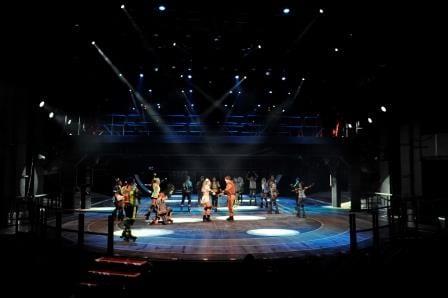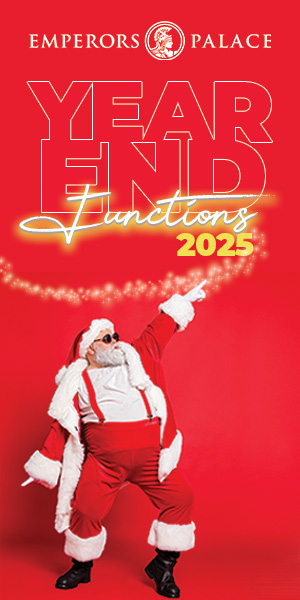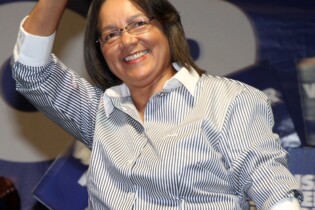Gearhouse Splitbeam was the theatre lighting supplier of choice for the South African production of Andrew Lloyd Webber’s Starlight Express at The Mandela, Joburg Theatre in Johannesburg. Produced by the theatre’s Executive Producer, Bernard Jay, and directed by Janice Honeyman, this much loved musical exploded onto the South Africa theatre scene in July 2013.
According to Splitbeam’s Managing Director, Alistair Kilbee, Starlight has always been a larger-than-life kind of production and the scale on the South African version lives up to expectations. “For Splitbeam, this is a great opportunity to extend our knowledge working on a large musical” he says. “One of the things that I am really proud of is that although Splitbeam is one of the most experienced theatre lighting companies in the country, my team is always keen to learn something new from whoever they are working with.”
In this case, the team has been working closely with UK-based Declan Randall, a professional Lighting Designer who, Kilbee says, “loves to push the limits of theatre design.” Randall has been involved in the planning of the production together with the Producer and Director for over a year already and so has had plenty of time to allow lighting design ideas to “percolate slowly” in the back of his mind.
“For me, the key motif in the show is movement,” explains Randall, “in particular, the sense of rhythm created by the light of a moving as it passes trees, stations etc. I tried to recreate the sense of constant movement and speed through lighting, using the physical movement of light beams and changes in colour and light intensity. We also designed some custom ‘train track’ gobos for the VL3500’s which were used in the races and at other key moments to reinforce this idea.”
He used multi-part cross-fade cues to either follow or lead the “trains” as they entered which would then fade out behind them, creating “trains of light.” A main element of the design was a parcan “matrix” which divided the stage into 147 separately controlled areas using pixel-mapping software to generate the required effects.
“Declan’s style is very distinctive. His rigs are large and complex and he uses more programmed cues than most,” says Kilbee “At the same time, his planning is at the highest level and his paperwork is flawless – every detail is outlined on the plan.” Nonetheless, Kilbee encourages his staff to ask as many questions as they feel necessary, to ensure they are on the same wavelength as the designer and that they come away having learned something new.
This time round, the Splitbeam crew was excited to see how the challenge of matching Randall’s “train track” gobos to the paintwork on the floor was resolved. “I designed a set of train tracks that would interlock to form a complete race course for the trains once we had the composite image all aligned,” he elaborated. “We then had great fun coming up with different ways to ‘assemble’ the track for the actual races.” It was no small feat to line up images emanating from differently angled VL3500’s at a height of around 9m, with the design on the floor, but they pulled it off and it worked very well.
“The guys at Splitbeam really understand the nature of theatrical design and the role of the designer. They were extremely helpful and supportive and did everything possible to help me to achieve the vision for the show” said Randall. “They also understand the demanding budgets and pricing requirements of a large-scale musical and worked tirelessly to ensure that we got exceptional value for money. Their technical support team were always ready to help out on the rare occasions when things went wrong.”
The Splitbeam stockholding also worked well for Randall’s design. He selected the hardworking Vari-Lite VL3500’s for their zoom and output as well as their versatile shuttering systems. “We were able to do some really clever things with composite images thanks to the optical capabilities of these work horses.”
The Robe Robin 600 was an equally useful fixture on the rig. The requirement was for a fixture that was bright and could change colour quickly, so an LED fitting was the immediate starting point. “The Robins are punchy and quick on both movement and colour, so they were a good tool to have on the rig.” he says.
There was a lighting “first” for Randall too, as he had had the opportunity to work with the RSC Lightlock for the first time. “I used them to support the 2 ladders that hang in the proscenium opening, and they worked really well. Even after quite a wild rove effect, there was no movement in the ladders which meant that I could go from a fast rove to a special on a performer and the light would hit its mark every time. If only the same could be said for the performers…!”
All jokes aside, though, it seems that the choice of Splitbeam as supplier worked out well for him. “The gear arrived all well-prepped and ready to be rigged. Fittings and fixtures were all in a great condition which made for an easy fit-up. The team was very supportive and willing to assist and nothing was ever too much trouble. I simply cannot imagine doing a large-scale musical, or any other production for that matter, without the support and help of the Splitbeam team – Thank you guys.”








